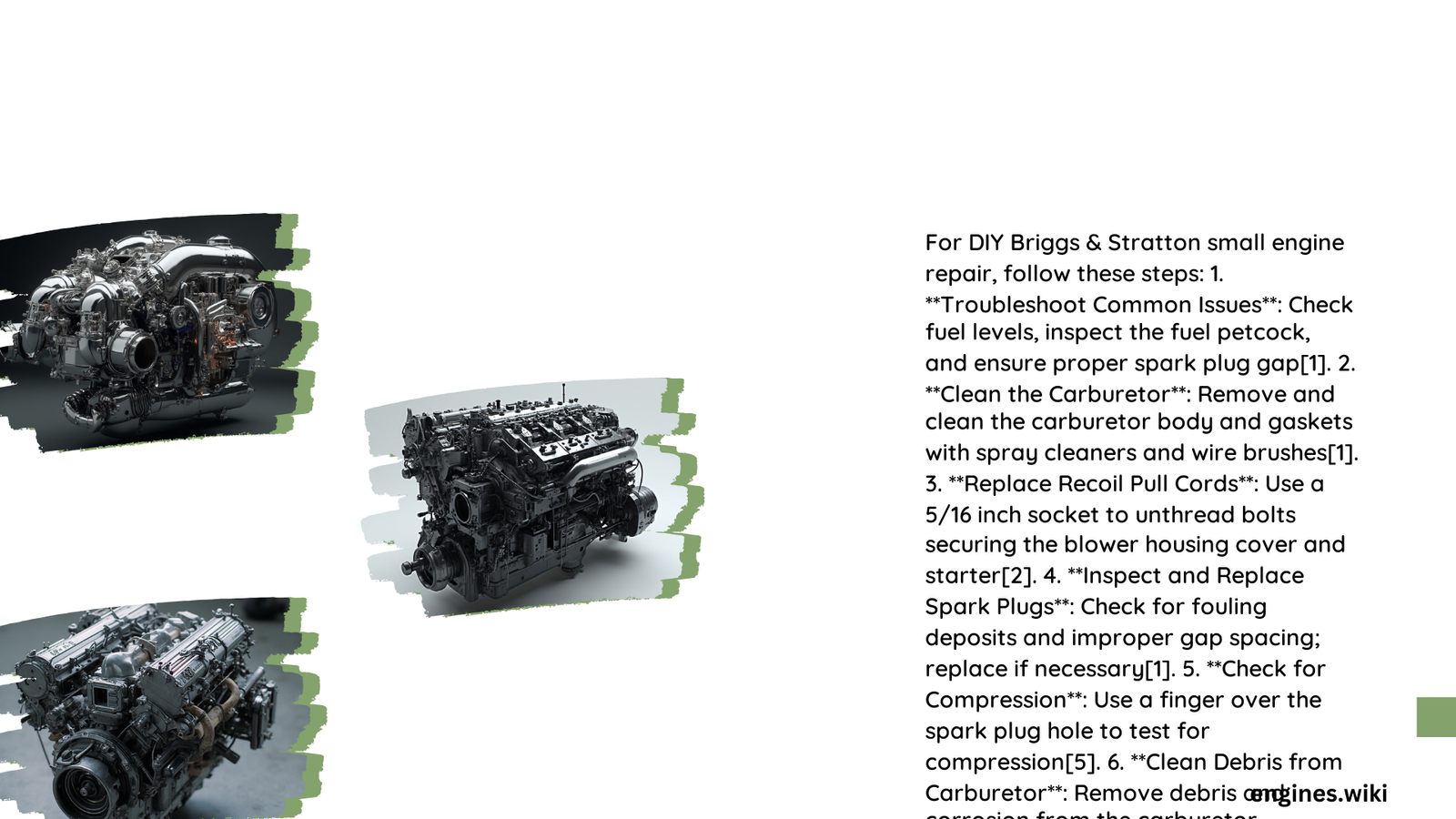Maintaining and repairing Briggs & Stratton small engines can save you significant money and extend your equipment’s lifespan. Whether you own a lawnmower, generator, or other power equipment, understanding basic DIY small engine repair techniques is crucial. This comprehensive guide will walk you through essential maintenance procedures, troubleshooting methods, and practical repair strategies specifically tailored for Briggs & Stratton engines.
What Are Common Small Engine Problems?
Small engines can experience various issues that impact performance and reliability. Here are the most frequent problems homeowners encounter:
| Problem | Potential Causes | Recommended Action |
|---|---|---|
| Hard Starting | Stale fuel, dirty spark plug | Clean/replace spark plug, use fresh fuel |
| Loss of Power | Clogged air filter, carburetor issues | Clean air filter, inspect carburetor |
| Excessive Vibration | Loose components, unbalanced parts | Check mounting bolts, inspect engine mounts |
How Do You Diagnose Starting Issues?

Spark Plug Inspection
- Remove spark plug carefully
- Check for:
- Fouling
- Corrosion
- Improper gap
- Clean or replace if necessary
Fuel System Evaluation
- Drain old fuel
- Use fuel stabilizer
- Check fuel lines for cracks
- Inspect fuel filter
What Tools Do You Need for DIY Repair?
Essential toolkit for Briggs Stratton engine repair:
- Socket set
- Screwdrivers (flathead and Phillips)
- Spark plug socket
- Torque wrench
- Carburetor cleaner
- Compressed air
- Multimeter
- Oil drain pan
How to Perform Carburetor Cleaning?
Detailed Cleaning Process
- Disconnect fuel line
- Remove carburetor carefully
- Disassemble components
- Soak parts in carburetor cleaner
- Use compressed air to remove debris
- Reassemble and reinstall
What Are Oil Change Best Practices?
Oil Change Steps
- Use recommended oil type (SAE 30 or 10W-30)
- Change oil every 25 operating hours
- Warm engine before draining
- Use clean funnel
- Check oil level after refilling
Pro Tips for Long-Term Engine Health
- Store equipment in dry location
- Use fuel stabilizer
- Clean air filter regularly
- Perform annual maintenance
- Follow manufacturer’s recommended service intervals
Troubleshooting Performance Issues
Power Loss Diagnosis
- Check compression
- Inspect valve clearance
- Evaluate fuel quality
- Test ignition system
- Examine exhaust system
When to Seek Professional Help?
Consider professional repair if:
– Engine requires major component replacement
– Compression test shows significant issues
– Electrical system needs complex diagnosis
– Repair requires specialized tools
Maintenance Frequency Recommendations
| Component | Inspection Interval | Action |
|---|---|---|
| Air Filter | Every 25 hours | Clean/replace |
| Spark Plug | Annually | Inspect/replace |
| Oil | Every 25 hours | Change |
| Carburetor | Annually | Clean/adjust |
Safety Precautions
- Disconnect spark plug wire
- Work in well-ventilated area
- Use protective eyewear
- Wear gloves
- Avoid smoking near fuel
Cost Savings Breakdown
| Repair Type | DIY Cost | Professional Cost | Savings |
|---|---|---|---|
| Spark Plug Replacement | $5-$15 | $50-$100 | 70-85% |
| Carburetor Cleaning | $10-$25 | $100-$250 | 80-90% |
| Oil Change | $5-$15 | $50-$75 | 75-80% |
Reference:
– Briggs & Stratton Official Website
– Small Engine Repair Guide
– Maintenance Tutorials
